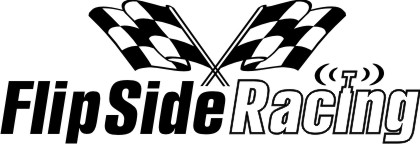Changes between Version 10 and Version 11 of DiyIcsAdaptors
- Timestamp:
- 05/12/10 21:17:26 (15 years ago)
Legend:
- Unmodified
- Added
- Removed
- Modified
-
DiyIcsAdaptors
v10 v11 9 9 To keep the design simple we will use an already existing USB to Serial TTL adapter and use a diode to bridge the transmit and receive lines to 1 wire. USB Serial to TTL adapters will get the voltage level close to where we need it for the Kyosho PCB's. Since the dNaNo operates at 3.7 volts it is safest if we get our TTL voltage down to that level or below. 10 10 11 Using transistors to bridge the transmit and receive lines together would be a better design since by using a diode we will get an echo of all the transmitted data back to the computer. The Flip Side ICS Software will ignore this echoed data so it is not a concern. The diode will also drop the voltage level by approximately .7 volts. This allows us to start with a 5 volt USB to TTL adapter and use 2 diodes to get the voltage to 3.6 volts, right around the same voltage as the dNaNo. It may be possible that A3.3 volt TTL adapter can also be used but use only 1 diode in that case. The Mini-Z and dNaNo boards will communicate at lower voltages but going over there voltage limits could create problems.11 Using transistors to bridge the transmit and receive lines together would be a better design since by using a diode we will get an echo of all the transmitted data back to the computer. The Flip Side ICS Software will ignore this echoed data so it is not a concern. The diode will also drop the voltage level by approximately .7 volts. This allows us to start with a 5 volt USB to TTL adapter and use 2 diodes to get the voltage to 3.6 volts, right around the same voltage as the dNaNo. It may be possible that a 3.3 volt TTL adapter can also be used but use only 1 diode in that case. The Mini-Z and dNaNo boards will communicate at lower voltages but going over there voltage limits could create problems. 12 12 13 13 Overall this design allows us to build a USB to ICS adapter with a minimal amount of parts. … … 21 21 22 22 23 === 3.3 volt USB to TTL adapter ===24 Below is a schematic based on a 3.3 volt USB to TTL adapter. I have not attempted to use a 3.3 volt TTL device so I do not know if this will work. Notice the use of 1 diode, this brings the voltage level down to approximately 2.6 volts. Click on the image to see a larger version.23 === 3.3 volt USB to TTL adapter, UNVERIFIED DESIGN === 24 Below is a schematic based on a 3.3 volt USB to TTL adapter. I have not attempted to use a 3.3 volt TTL device so I do not know if this will work. Notice the use of 1 diode, this brings the voltage level down to approximately 2.6 volts. While this should work you may need to use a germanium diode as it only has a .1 volt drop. Click on the image to see a larger version. 25 25 26 26 [[Image(//images/schematics/icsusbschematic.png, 25%, title=3.3 volt USB to TTL adapter)]] … … 48 48 [http://search.digikey.com/scripts/DkSearch/dksus.dll?Detail&name=768-1029-ND 5V FTDI TTL to USB Convertor, wire end (I have successfully built this using 2 diodes with this one)] 49 49 50 [http://search.digikey.com/scripts/DkSearch/dksus.dll?Detail&name=768-1016-ND 3.3V FTDI TTL to USB Convertor, wire end (U nverified design, use 1 diode with this one)]50 [http://search.digikey.com/scripts/DkSearch/dksus.dll?Detail&name=768-1016-ND 3.3V FTDI TTL to USB Convertor, wire end (UNVERIFIED DESIGN, use 1 diode with this one)] 51 51 52 52 There are other versions of this adapter available with different types of connectors such as a 3 pin audio jack or a .1" pin connector. If you search for TTL-232R you will find the various versions of the FTDI adapter. … … 54 54 = Construction = 55 55 56 Detailed below is the construction of a ICS adapter using a USB to 5 volt serial TTL adapter. While using a 3.3 volt TTL adapter may work the 5 volt adapter is the only design I have verified to operate properly. 57 56 58 The hardest part of constructing this adapter is crimping the pins needed for the JST ZH cable. These pins are small and you will want a proper crimping tool to do this task. 59 60 [[Image(//images/diyusbics/plugend.jpg, 256px, title=JST ZH cable)]] 57 61 58 62 After you have built your connector there are 1 or 2 diodes that need soldered to bridge the transmit (orange) and receive (yellow) wires. When soldering the diodes in place make sure the black line is facing the yellow (receive) wire. If the diodes are installed backwards your adapter will not work. 59 63 64 [[Image(//images/diyusbics/soldereddiodes.jpg, 256px, title=Soldered Diodes)]] 65 60 66 Once the diodes are installed you must make an additional connection between the yellow (receive) wire and pin 2 of the JST ZH connector. This is the signal pin. Out of the 4 pins in the connector only the signal and ground pins must be connected. 67 68 [[Image(//images/diyusbics/solderedsignal.jpg, 256px, title=Soldered Signal)]] 61 69 62 70 Finally to connect the ground lines you must connect the black (ground) wire from the USB to TTL adapter to pin 4 of the JST ZH connector. 63 71 72 [[Image(//images/diyusbics/solderedground.jpg, 256px, title=Soldered Diodes)]] 73 64 74 You should now have your own USB to ICS adapter, congratulations. 75 76 [[Image(//images/diyusbics/finishedcable.jpg, 256px, title=Soldered Diodes)]] 65 77 66 78 = License =
